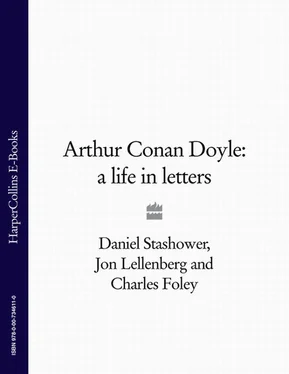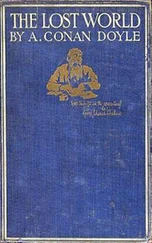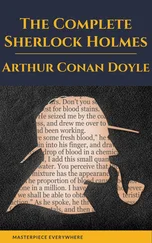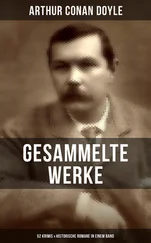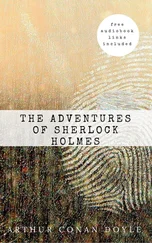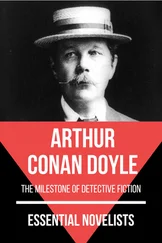John Doyle himself had seven children of whom five survived past adolescence. James Doyle (1822-92), Richard Doyle (1824-83), and Henry Doyle (1827-92) have been mentioned previously, along with Arthur’s father, Charles Altamont Doyle, who was born on March 25, 1832, and died on October 10, 1893. In addition, there was a daughter, Ann Martha Doyle (1821-99), called Annette, who played an important part in her nephew’s life. With the exceptions of Arthur’s father, who went to Edinburgh when young, and his uncle Henry, who spent many years in Dublin, the family’s life centred in London.
On his mother’s side, Arthur Conan Doyle’s other grandfather was William Foley (1807-40) of Lismore, County Waterford, Ireland. He married Catherine Pack in 1835. She died in 1862, and seeing her lifeless body was Arthur’s earliest memory. William and Catherine Foley had two daughters: Conan Doyle’s aunt Kate, Catherine Foley, born in 1839 (but who emigrated when he was young, and the date of her death is unknown); and Conan Doyle’s mother, Mary Josephine Elizabeth Foley, who was born in Lismore on July 8, 1837, and died at her home ‘Bowshott Cottage’ in West Grinstead, Surrey, on December 30, 1920.
Charles Doyle and Mary Foley married on July 31, 1855, and lost little time in starting their large family. Two daughters died young: Catherine Amelia Angela, who lived only six months in 1858, and Mary Helena Monica Harriet, who was born in 1861 but died after two years. Five other daughters and two sons survived to adulthood, with names frequently drawn from relatives or friends, with the occasional saint’s name for good measure:
ANNE MARY FRANCES CONAN DOYLE, born on July 22, 1856, and known as Annette (‘Tottie’ when young) after her aunt and namesake. Called ‘the prop of the family’ by Arthur for her hard work helping to raise and educate her younger brothers and sisters, she never married, and she died from influenza at the age of thirty-three, on January 13, 1890.
ARTHUR IGNATIUS CONAN DOYLE, born on May 22, 1859, and died on July 7, 1930, at age seventy-one. His first marriage, in 1885, to Louisa Hawkins (nicknamed ‘Touie’), produced two children, Mary and Kingsley; his second marriage, in 1907 to Jean Elizabeth Leckie, produced three children, Denis, Adrian (often called Malcolm in his youth), and Jean.
CAROLINE MARY BURTON DOYLE, called ‘Lottie’, was Arthur’s favourite sister. Six years younger than Arthur, she was born February 22, 1866. Lottie married Leslie Oldham in 1900, and they had one daughter, Claire. Lottie survived Arthur, dying on May 3, 1941.
CONSTANCE AMELIA MONICA DOYLE, the beauty of the family, called ‘Connie’, was born March 4, 1868, making her eight years younger than Arthur. She married the writer E. W. Hornung in 1893, and they had one child, Arthur Oscar. She died on June 24, 1924.
JOHN FRANCIS INNES HAY DOYLE, called Innes (or Frank, Geoff, then ‘Duff’, when young), was born March 31, 1873. Arthur took an active role bringing up his fourteen years’ younger brother. Innes married Clara Schwensen in 1911, and they had two sons, John and Francis, before his death on February 19, 1919.
JANE ADELAIDE ROSE DOYLE, called ‘Ida’, was born March 16, 1875, and died on July 1, 1937. In 1895 she married a widowed cousin, Nelson Foley, and they had two sons of their own, Percy and Innes.
BRYAN MARY JULIA JOSEPHINE DOYLE, called ‘Dodo’, was born March 2, 1877, and died on February 8, 1927, predeceasing her considerably older brother Arthur. She married the Reverend Cyril Angell in 1899, and they had one son, Branford.
Whether playing cricket with James Barrie, the author of Peter Pan, and Anthony Hope, the author of The Prisoner of Zenda, or golfing in a Vermont field with Rudyard Kipling, or writing plays for the leading actors of his day, or dining with William Waldorf Astor, or Winston Churchill, or Theodore Roosevelt, or the Prince of Wales, it can seem as if Conan Doyle was always at the centre of the great literary and political circles of his era. But this exalted life only came after many years of poverty and hard work, struggling first to make a success of himself as a physician, and then as a writer. His letters provide a rich and compelling chronicle of those times, from such commonplace matters as food parcels from home (‘the duck was in perfect condition after eight days’ travel’) through glamorous poetic descriptions of exotic foreign lands:
I ascended the pyramid this evening and saw the sunset. On one side the green delta of the Nile, still shining with scattered pools from the subsiding rivers, the minarets of Cairo in the distance, many scattered mud-coloured villages, lines of camels slouching from one to the other—on the other side the huge grey plain & rolling hillochs of the Sahara which extends straight from here to the Atlantic, 3000 miles.
His letters deal with a range of subjects that defined the age, including the literary and theatre worlds of both Britain and America, the British struggle for empire in Egypt and the Sudan; his country’s bitterly controversial war in South Africa; bitterly contested politics at home (including his own two campaigns for a seat in the House of Commons); the sunnier world of sports (including the early days of the Olympic Games); the perennial and unsolvable question of Ireland; divorce law reform and women’s suffrage (he was in favour of the first, and against the second); warnings about Germany’s intentions in the days before World War I and reports from the front after the war broke out; the coming of automobiles, motorcycles, airplanes, submarines, radio, and motion pictures; and many insights into famous contemporaries.
The result is both an intimate memoir and a window opening onto a bygone age. In these letters, especially the ones to his mother, Conan Doyle held few things back, from the lofty ambitions of youth—‘We’ll aim high, old lady, and consider the success of a lifetime, rather than the difference of a fifty pound note in an annual screw’—through the critical disappointments of his struggle to free himself from the public’s demand for more and more Sherlock Holmes, and his restless search for ‘some big purpose’ that would define his life and career.
SHERLOCK HOLMES, AND OTHER WORK
As one might expect, these letters hold many revelations about the origins of Sherlock Holmes. Not only does the young author give a vivid account of the great detective’s fitful beginnings, but it is intriguing to note many details from Conan Doyle’s private life that transferred into the stories. The letters from the 1880s spent in Southsea, a suburb of Portsmouth on the Channel coast, where the first two Holmes novels were written, offer vivid details of Conan Doyle’s early struggles as an aspiring author. He writes frequently of his difficulties in making ends meet, his problems with tax collectors, and trying to get by selling anonymous stories to the popular magazines of the day. As he makes his first tentative steps into the literary arena, he offers blunt assessments of each new manuscript (‘I have completed a very ghastly Animal Magnetic vampirey sort of a tale’), and details the apparently endless round of rejections that his early work amassed: ‘My dear, I am continually sending things to the Cornhill and they send them back with a perseverance worthy of a better cause.’
The eventual success of Sherlock Holmes (‘Sherlock Holmes seems to have caught on,’ he told his mother in 1891, in one of the great under-statements in literary history), and Conan Doyle’s notorious ambivalence toward his most famous creation, formed a thread throughout his life. The first two Sherlock Holmes novels in 1887 and 1889 were failures, but as the short stories burst onto the pages of the Strand magazine in 1891, Conan Doyle welcomed the sudden rush of wealth and fame. But very soon he became wary of being too closely associated with what he called the ‘humbler plane’ of detective fiction. ‘He takes me from better things,’ he told his mother.
Читать дальше
